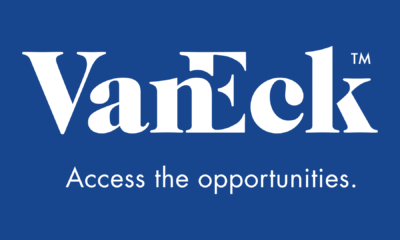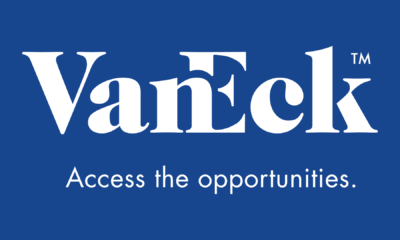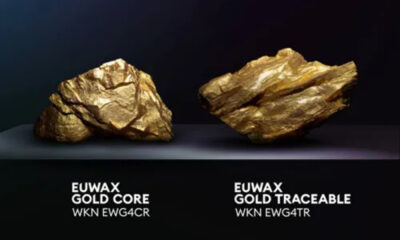Nyheter
Rebalancing Markets Fuel Positive Sentiment for Hard Assets
Publicerad
9 år sedanden
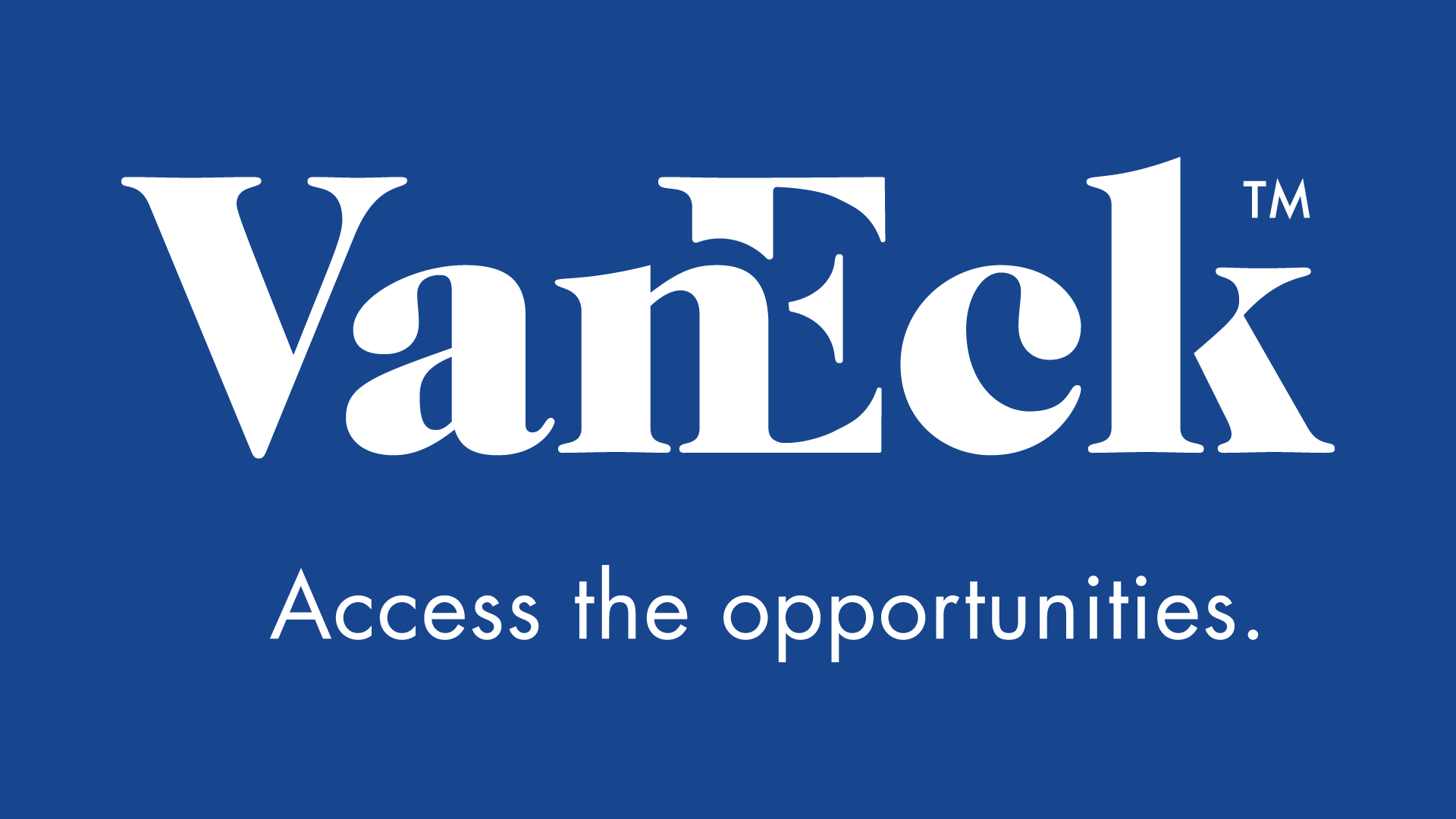
3Q’16 Hard Assets Equities Strategy Review and Positioning Our hard assets equities strategy’s positions in Energy and Diversified Metals & Mining sectors were, in particular, significant contributors to positive performance. Within the Energy sector, positive performance stemmed mainly from the Oil & Gas Exploration & Production (E&P) sub-industry. The Oil & Gas Drilling sub-industry also made a useful contribution to performance during the quarter. By contrast, Oil & Gas Equipment & Services was the only energy sub-industry to detract from the strategy’s performance and its impact was relatively minimal. Other sub-industries that made positive contributions of note to performance were Copper and Coal & Consumable Fuels. During the quarter, the strategy continued to hold no position in Integrated Oil & Gas.
3Q Performance Contributors
The top performing company was major diversified mining company Glencore,1 which continued to benefit from debt reduction and overall restructuring initiatives that began in 2015. In the face of persistent skepticism from the market, Glencore has proved demonstrably that it has been able to provide a workable blueprint and subsequently execute its plan to deleverage its balance sheet and improve its cost structure. Not only has Glencore delivered (as we expected) thus far on what it said it would do, it continues to implement its debt reduction program. This has, in some instances, been in contrast with other major metal mining companies that, despite rhetoric to the contrary, have been slow to recognize the need for, or have been unsuccessful in, executing similar restructuring measures and have largely been playing ”catch up” with Glencore in the eyes of the market.
Rounding out the top 5 performing positions were E&P companies, Pioneer Natural Resources,2 Parsley Energy,3 and SM Energy.4 These companies benefited from the high quality of their assets and acreages, in particular those in the Permian Basin. The final top five contributing company for the quarter was metal mining company Teck Resources5 which benefited from strengthening zinc and coal prices.
3Q Performance Detractors
Over the past three years, global demand for coking coal has been relatively solid at an annual level of around 990 million tonnes (Mt). China is one of the most important consumers in terms of setting prices, since it accounts for approximately 60%, or 590Mt, of global coking coal demand. It is followed by Japan at 69Mt, India at 49Mt, and South Korea at 40Mt. Demand from the U.S. is for approximately 21Mt per annum.
In a reversal from the second quarter when gold was the strongest performing sub-industry, in the third quarter, gold was the largest detractor from Fund performance. Gold mining companies Barrick Gold,6 Goldcorp,7 and Randgold Resources8 all suffered from a consolidation in the gold price during the period, and by quarter end we had reduced our exposure to each. The two other poor performers during the quarter were E&P companies Hess,9 which had to contend with a dry hole in Guyana, and Gulfport Energy.10
Positive Market Sentiment and Demand for Commodities in 3Q
Despite the continuing uncertainties in the market surrounding the U.S. presidential elections, and in the face of moderating global GDP growth, sentiment was on the positive side and demand for commodities remained remarkably resilient. As in the second quarter of the year, the most significant macroeconomic factor influencing the hard assets strategy was the extraordinary monetary accommodation extended by central banks around the world, which continues to add support for economic growth and demand for commodities.
Gold Consolidated After 2Q Rally
After an explosive first half of the year, the gold market experienced significant consolidation during the third quarter and gold mining companies suffered. On a positive note, gold mining firms overall have been bolstered by restructuring and strategic improvements and appear well positioned to withstand a short-term decline in the gold price.
Global Demand for Crude Oil Remained Strong
Global demand for crude oil and, in particular, gasoline increased once again during the quarter. U.S. gasoline demand remains at record highs and the country is now consuming approximately 10 million barrels a day. The country’s gasoline demand continues to exceed the unrefined crude oil demand of every country in the world except China.
Supply disruptions with the potential to impact future production continued during the quarter including the lingering effects of attacks instigated by militant groups in Nigeria, an uncertain and confusing political situation in Libya, and a deteriorating economic and social environment in Venezuela, where production had fallen some 6% from approximately 2.35 million barrels a day (bbl/d) at the beginning of the year to approximately 2.2 million bbl/d by the end of the quarter. On a positive note, oil sands production in Canada was no longer affected by the wild fires that impeded second quarter production.
U.S. Oil Rig Count Rebounded Slightly
In the U.S., the rig count continued to rebound slightly and increase at a modest pace from previous trough levels. However, we continue to note and emphasize that any rebound remains very much incremental when compared with the nearly 1,300 rigs in the U.S. that were taken out of commission between 2014 and 2016.
Zinc and Coking Coal Excelled for Base/Industrial Metals
In the base metals space, zinc experienced further rebalancing of supply and demand. Fundamentals continued to tighten with a reduction in overall supply accompanied by solid demand (Read Zinc’s Year to Remember: A Supply-Side Story for details). Nickel markets erased losses from early in the quarter following the results of environmental mine audits in the Philippines in which three quarters of mines fell short, with 20 mines facing suspension, and an announcement by Indonesia that the ban on exports was being reconsidered. At the company level, restructuring continues. Balance sheet strengthening appears to be the primary objective with reducing operating costs a secondary focus. Additionally, we are just now starting to hear chatter from some companies about re-engaging growth projects.
By the end of the quarter, the prices of metallurgical coal (an essential steel-making raw material used to produce coke which, in turn, is used in the production of steel) had climbed more than 100% since the beginning of the year. The overwhelming driver behind this price recovery has been supply. In addition to both lower seaborne and domestic supply, global inventories are also at multi-year lows.
Deal Activity Dominated the Agriculture Sector
In the agriculture sector, the quarter was marked by two major deals and the potential for further consolidation in the potash market amid oversupply. U.S. agriculture giant, Monsanto, agreed to be bought by German giant Bayer11 while Canada’s Agrium12 and PotashCorp13 of Saskatchewan agreed to merge. In grains, an ideal growing season in the U.S. lead to close to record production in both corn and soybean.
Positive Outlook for Remainder of the Year
In the fourth quarter, we see the macro drivers continuing to be central bank policy and the ramifications of the forthcoming presidential election in the U.S. Broadly speaking, commodity demand has proven to be remarkably resilient. Despite concerns about global growth there is still firm demand and healthy consumption. On the supply side, we continue to see the effects from the lack of investment and capital expenditure reductions over the past several years.
OPEC Production Decision Puts Focus on Saudi Arabia and Iran
At the very end of the quarter, OPEC (Organization of the Petroleum Exporting Countries) came to an agreement to cap production. This move appears to us to indicate that Saudi Arabia and other OPEC members have reached their threshold of pain, which appears to be roughly in the $40 to $45 price-per-barrel range. Anything below that would probably only serve to consolidate and accelerate any decisions they might make as a group which indicates that, surprisingly, there may actually be a price floor.
Mainstream interpretation seems to be that the OPEC announcement is a reaction to $40 oil. Maybe it is, but we believe it could also be the excuse that Saudi Arabia has needed to allow it to force through some serious, and absolutely essential, economic restructuring. It now has the low price of oil to blame publicly.
Saudi Arabia is Worried About Oil Price Spike in Next 18 to 24 Months
We believe that the move by Saudi Arabia is a longer-term one and that, in particular, it demonstrates the country is also worried about a spike in oil prices in the next 18 to 24 months. Any such spike may: a) help Iran the most (something Saudi Arabia is not too keen on doing); b) eventually cause the price to plummet back down; and c) accelerate alternative energy use. Evidence of this can be seen in the press release issued by OPEC following its September meeting, in which it said that its objective was ”to stabilize the oil market and avoid the adverse impacts in the short- and medium-term.”
We also see this move as a way for Saudi Arabia to indicate to Iran that it is happy for the country to try and ramp up production from 3.6 million to 4 million barrels a day (something Iran is struggling to do as shown in Chart A) over the next four to five years. The Saudis are fully aware that this is extremely unlikely to happen any time soon as Iran has only hit the 4 million barrels per day figure three times since 1978.
Iranian Crude Oil Production
Monthly in Barrels: 12/31/79 to 9/30/16

(Click to enlarge) Source: Bloomberg. Data as of September 30, 2016.
While the focus is squarely on Saudi Arabia and Iran, among other OPEC nations, despite the political uncertainty in Libya mentioned earlier, there do appear to be some moves toward establishing some sort of unified government and we have seen the beginning of some flows of oil in the country.
We continue to point out that it is easy to fall into the trap of thinking that a simple increase in the current U.S. onshore oil rig count of approximately 400 rigs can restore the supply balance. But people forget that the U.S. rig count at its high numbered close to 1,700 in 2014 and that it has declined more than 75%, or 1,300 rigs, since then. It will take a considerable increase in the current rig count to bring back any growth in production.
In addition, people continue to miss the fact that conventional exploration has been abysmal (discoveries in 2015 were the lowest since 1947 as shown in Chart B), a point that was also hinted at in OPEC’s press release when it was stated that the ”Conference … noted that world oil demand remains robust, while the prospects of future supplies are being negatively impacted by deep cuts in investments and massive layoffs.”
Conventional Oil Discoveries Are in Decline
Yearly in Barrels: 1947 to 2016

(Click to enlarge) Source: Wood Mackenzie; Bloomberg. Data as of August 31, 2016.
U.S. Shale Oil Production Will Need Time to Ramp Back Up
As usual, during the quarter we made a number of trips outside the U.S. and met with many prospective and existing clients. During our visits we noted a recurrent theme of strong skepticism around the rebalancing of commodity markets and, in particular, oil. We believe that much of this has been fueled by headlines that trumpet Saudi and Russian oil production reaching all-time highs, and talk of the strength of the rebound in the oil rig count in the U.S.
People seem to truly believe that shale oil is a spigot that can just be turned on and off at will, and there continues to be a misplaced belief that higher oil prices will reinvigorate shale drilling to the point where it starts to raise production and ”unbalance” the fundamentals. We do not believe this to be the case and, in our view, any increase in U.S. production must be preceded by a dramatic increase in the rig count which will require significantly higher crude prices.
POST DISCLOSURE
1 Glencore represented 4.05% of Fund net assets as of 9/30/16.
2 Pioneer Natural Resources represented 3.98% of Fund net assets as of 9/30/16.
3 Parsley Energy represented 3.92% of Fund net assets as of 9/30/16.
4 SM Energy represented 2.42% of Fund net assets as of 9/30/16.
5 Teck Resources represented 3.20% of Fund net assets as of 9/30/16.
6 Barrick Gold represented 1.48% of Fund net assets as of 9/30/16.
7 Goldcorp represented 2.29% of Fund net assets as of 9/30/16.
8 Randgold Resources represented 2.25% of Fund net assets as of 9/30/16.
9 Hess represented 2.04% of Fund net assets as of 9/30/16.
10 Gulfport Energy represented 2.05% of Fund net assets as of 9/30/16.
11 Bayer represented 0.00% of Fund net assets as of 9/30/16.
12 Agrium represented 1.84% of Fund net assets as of 9/30/16.
13 PotashCorp represented 0.00% of Fund net assets as of 9/30/16.
by Shawn Reynolds, Portfolio Manager
Reynolds has more than 30 years of experience covering the energy sector. Before his career in finance, Reynolds worked as an exploration geologist and earned degrees in geology and engineering.
Du kanske gillar

De senaste månaderna har det varit större förändringar på denna lista än normalt. Under juni 2025 förändrades listan på de mest eftersökta ETFerna åter kraftigt, vilket numera är ganska normalt. Denna månad var det hetaste investeringstemat i månadsutdelande ETFer . Vi noterar är att Montrose befäster sin position som den populäraste ETFen på Etfmarknaden.se samtidigt som listan är mer koncentrerad än tidigare.
Det går att handla andelar i dessa ETFer genom de flesta svenska banker och Internetmäklare, till exempel Nordnet, SAVR, DEGIRO och Avanza.
Månadsutdelande fonder tilldrar sig stort intresse
Den 6 november förra året, bara dagar efter att vi publicerat en artikel om månadsutdelande fonder, lanserade JP Morgan en helt ny variant av en månadsutdelande fond. JPMorgan US Equity Premium Income Active UCITS ETF USD (dist) (JEIP ETF) med ISIN IE000U5MJOZ6, är en aktivt förvaltad ETF.
Den börshandlade fonden investerar i företag från USA. Ytterligare intäkter söks genom användning av en överlagringsstrategi med derivatinstrument. Denna ETF strävar efter att generera en högre avkastning än S&P 500-index.
Detta ledde till att vi fick uppdatera vår artikel om månadsutdelande fonder med JEIP men också med JPMorgan Nasdaq Equity Premium Income Active UCITS ETF USD (dist) (JEQP ETF) med ISIN IE000U9J8HX9, som är en aktivt förvaltad ETF, men som mäter sig mot Nasdaq-100 istället.
Under den sista veckan i februari 2025 noterade Montrose den första svenska ETFen på fem år. MONTDIV ETF är Sveriges första månadsutdelande ETF och rusade snabbt på listan efter de mest eftersökta börshandlade fonderna på vår sida. Det finns emellertid en hel del andra ETFer som ger utdelning varje månad. Vi uppdaterar löpande denna artikel.
När kommer utdelningen från MONTDIV?
Som nämnts så är MONTDIV den allra populäraste börshandlade fonden på vår sida. Tillsammans med sin syster ETF, MONTLEV, är de även populära på andra håll. Fram till idag har MONTDIV lockat närmare 300 miljoner kronor och seglat upp som den tredje mest ägda i Sverige. Dessutom stod Montroses två ETFer för vart fjärde ETF-avslut på Stockholmsbörsen (ex. Bull/Bear-produkter) under perioden mars-april 2025. Det ser vi som ett kvitto på att det finns en stor efterfrågan på börshandlade fonder.
ETP, ETF, ETC, ETN, ETI
Många är osäkra på terminologin när det gäller börshandlade produkter och vi ser dels hur de söker – och hittar många av de informativa artiklar som vi skrivit på Etfmarknaden.se, men också vår ordlista som förklarar det mesta som kan verkar förvirrande. En av våra äldre artiklar, Vad är vad? ETP, ETF, ETC, ETN och ETI från september 2012, har nu helt plötsligt dykt upp som en av de mer lästa artiklarna.
Fortsatt intresse för försvarsfonderna
Vilken ETF för försvarsindustrin är bäst och hur investerar man i denna sektor med hjälp av börshandlade fonder? I dag finns det flera ETFer som ger exponering mot flyg och försvar som följer tre olika index. De årliga förvaltningskostnaderna ligger 0,35 och 0,55 procent. Vi har skrivit en artikel om olika försvarsfonder. Du hittar mer om ETFer för försvarsindustrin här.
Utöver detta har samtliga de större aktörerna lanserat en en börshandlad fond för den europeiska försvarsindustrin vilka alla blirvit stora succcéer.
Inte längre populärast av dem alla
XACT Norden Högutdelande är utan tvekan en av de mest populära av alla de ETFer som vi har skrivit om på vår sida. Den kvartalsvisa utdelningen och dess satsning på aktier med en låg volatilitet och hög direktavkastning gör det till en populär fond som återfinns i mångas depåer. Nyligen lämnades årets andra utdelning från denna börshandlade fond.
Hur högt kommer vi när du Googlar på ordet ETF?
Under maj 2025 såg vi många sökningar på begreppen ETF, börshandlad fond och Etfmarknaden. Om det var vår egen sida eller om det var den totala marknaden för ETFer som besökarna sökte på vet vi inte, men efter att ha fått mail från en av de större emittenterna vet vi att de försöker kartlägga de svenska placerarnas exponering mot börshandlade fonder.
Om du söker på ordet ETF på Google, hur högt hamnar vi då?
Investerna söker information om försvarsfonder med fokus på Europa
Wisdomtree har under året lanserat en försvarsfond som investerar i europeiska företag, vilket även HANetf har gjort, kortnamnet är ARMY i London och 8RMY på tyska Xetra.
Populariteten för europeiska försvarsbörshandlade fonder (ETF:er) har ökat kraftigt på senare tid, drivet av betydande inflöden som återspeglar ett växande investerarintresse för sektorn. Dessa imponerande inflöden understryker det ökande erkännandet av försvarssektorns tillväxtpotential mot bakgrund av den nuvarande geopolitiska dynamiken.
SAVRs ETF-satsning skapar stort intresse
SAVR har precis valt att lansera handel med börshandlande fonder. SAVR som tidigare varit kände för att erbjuda handel med traditionella fonder har nyligen valt att lansera handel med aktier, men också med ETFer på framför allt tyska Xetra. På denna marknad erbjuder nu SAVR med flera ETFer än vad både Nordnet och Avanza gör.
Samtidigt har SAVR valt att lansera en egen produkt tillsammans med amerikanska Vanguard, SAVR Global by Vanguard.
Halalfonder är nu hetare än ESG
Tidigare var det många som sökte på begreppet ESG, men detta sökord har fallit från listan under de senaste månaderna. En variant av ESG-fond är de fonder som har en islamistisk inriktning, så kallade halalfonder, och det är fortfarande något som våra besökare letar information om. En sådan fond är ASWE, som är en aktivt förvaltad shariafond men till exempel HSBC har en serie fonder med fokus på att investera enligt islam. Det är ingen speciell enskild fond som sticker ut och lockar mer än andra.
Går det att handla ETFer hos Swedbank?
Swedbank ETF tror vi kan tolkas att det endera finns intresse för att veta om Swedbank har ETFer i sitt utbud, eller om det går att handla börshandlade fonder på Swedbank. Svaret på denna fråga återfinns här.
Räntesänkningar ökar intresset för fastigheter
Ett annat begrepp på listan är ETF fastigheter. Allt fler investerare tror att vi kommer att få se ytterligare räntesänkningar, inte bara i Sverige och Europa, men även i USA. Lägre räntor gör det enklare att räkna hem en investering i fastigheter. Kan det vara så att våra besökare undersöker möjligheterna att positionera sig i en ETF för fastigheter innan räntorna sänks för att de tror att det kommer att leda till en uppvärdering av fastighetsbolagen? Vill du ha några idéer så skrev vi en text om börshandlade fonder som investerar i fastigheter.
Du kan även läsa den text vi skrev i januari 2025 som heter 10 ETFer för att investera i fastigheter.
Är det värt att satsa på tyska aktier?
Många söker information om tyska aktier och tyska fonder. I mars publicerade vi en text som hette De bästa börshandlade fonderna för tyska utdelningsaktier. Kan det vara denna som lockar?
En investering i tyska utdelningsaktier, i alla fall sådana med hög utdelning anses av många vara en solid investering. Utdelning betalas vanligtvis av lönsamma och etablerade företag. För investerare som söker regelbunden inkomst i tider med låga räntor kan tyska utdelningsaktier ge attraktiv avkastning.
Det finns två huvudindex tillgängliga för att investera med ETFer i tyska högutdelningsaktier. Denna investeringsguide för tyska utdelningsaktier hjälper dig att navigera mellan särdragen hos DivDAX®-index och DAXplus® Maximum Dividend-index samt de börshandlade fonder som spårar dem. Det gör att du kan hitta de mest lämpliga ETFerna för dig genom att rangordna dem enligt dina preferenser.
Amerikanska large caps är något många vill veta mer om
Fonder som följer S&P 500 är, föga förvånande, en typ av fonder som det finns stort intresse kring. Det är ingen speciell enskild fond som sticker ut och lockar mer än andra. Det skall emellertid noteras att många sökningar sker på ord som ”Fond som följer S&P500 Avanza”. Vi skrev tidigare en artikel om S&P500 fonder, 26 börshandlade fonder som spårar S&P500 där vi jämförde alla de ETFer som spårar detta index i sin grundform.
BNP lanserade en europeisk försvarsfond i maj
BNP Paribas Asset Management (’BNPP AM’) tillkännagav idag noteringen av sin BNP Paribas Easy Bloomberg Europe Defense ETF på Euronext Paris, snart tillgänglig på Deutsche Börse Xetra, Borsa Italiana och SIX Swiss Exchange. Den handlas under kortnamnet BJL8 på tyska Xetra.
Investera i Polen med börshandlade fonder
I början av april skrev vi en text som sammanfattade att Investera i Polen med börshandlade fonder. Det tog en liten tid, men den har dykt upp på listan bland de mest populära fonderna.
I slutet av samma månad meddelade SAVR att företaget nu erbjuder handel på mer än 700 polska aktier.
Du kan handla Ripple med olika börshandlade produkter
Valour Ripple (XRP) SEK är en börshandlad produkt som spårar priset på XRP, Ripples infödda token. XRP förbättrar främst globala finansiella överföringar och utbyte av flera valutor. Snabb och miljövänlig, den digitala tillgången XRP designades för att fungera som den mest effektiva kryptovalutan för olika applikationer inom finanssektorn.
Valour Ripple (XRP) SEK ETP (ISIN: CH1161139584) är en börshandlad produkt som spårar priset på XRP, Ripples infödda token.
XRP har ett börsvärde på 29,57 miljarder USD och rankas på en sjätte plats bland alla kryptovalutor globalt. Ripple XRP är en nyckelspelare inom det digitala valutaområdet, känd för sin användning för att underlätta snabba och billiga internationella pengaöverföringar. XRP fungerar på RippleNet och fungerar som en bryggvaluta i Ripples betalningsnätverk, vilket möjliggör sömlösa valutaväxlingar över hela världen. Detta har positionerat XRP som ett föredraget val för finansiella institutioner som söker effektiva alternativ till traditionella gränsöverskridande betalningsmetoder.
Är du nyfiken på vilka börshandlade produkter det finns för att investera i XRP? Vi har självklart skrivit en artikel om detta där vi jämför alla de börshandlade alternativ vi hittat.
BlackRock lanserar europeisk försvars-ETF för europeiska investerare
’I slutet av maj lanserade BlackRock iShares Europe Defence UCITS ETF (DFEU), en europeisk försvars-ETF för europeiska investerare, som följer STOXX Europe Targeted Defence Index. Fonden är utformad för att ge exakt exponering mot europeiska försvarsföretag genom ett intäktsbaserat urval i en tid då europeiska nationer ökar de offentliga utgifterna för att förbättra sin försvarskapacitet.
Det går att handla börshandlade fonder hos Nordea
Nordea har en plattform, och i denna handelstjänst erbjuder denna bank tusentals olika ETFer. Det går att handla ETFer med fokus på räntemarknaden, aktiemarknaden, landspecifika ETFer och börshandlade fonder med fokus på olika branscher. Att handla ETFer hos Nordea sker endera i Nordea Investor och nätbanken.
Månadsutdelande fond med fokus på Europa
Global X EURO STOXX 50 Covered Call UCITS ETF EUR Distributing (SY7D ETF) med ISIN IE000SAXJ1M1, syftar till att följa EURO STOXX 50 Covered Call ATM-indexet. EURO STOXX 50 Covered Call ATM-indexet följer utvecklingen av en täckt köpoption på EURO STOXX 50-indexet. En täckt köpoption kombinerar en lång position i en tillgång med försäljning av köpoptioner på denna tillgång.
Dyrare kaffe skapar intresse för börshandlade produkter
Det stigande kaffepriset (som du kan följa här) har lett till ett ökat intresse bland investerarna för att köpa en ETF som spårar kaffepriset. Det finns emellertid ingen ETF som spårar kaffepriset, då Eus regler kräver att det finns minst 16 olika komponenter i en ETF. Det finns emellertid ett par ETCer som gör samma sak, till exempel WisdomTree Coffee (OD7B ETC).
Investera i platina med börshandlade produkter
När en investerare har bestämt sig för vilken eller vilka metaller de vill köpa kvarstår frågan om ”hur investera i platina”. Det finns flera investeringsprodukter tillgängliga för potentiella platinaägare. I artikeln utforskar vi några av de vanligaste metoderna, och tittar på några av deras fördelar och nackdelar, för att hjälpa dig att fatta det beslut som bäst passar dina investeringsbehov och ambitioner.
Världens största fond
VOO är nu världens största börshandlade fond. Fredagen den 14 februari 2025 (Alla hjärtans dag), sista arbetsdagen före Presidents Day, firandet av George Washingtons födelsedag, kommer verkligen att komma ihåg som dagen VOO kunde överträffa SPYs enorma AUM (631,9 miljarder USD respektive 630,4 miljarder USD).
SPY, som lanserades 1993 och förvaltas av State Street SPDR ETFer, är fortfarande den överlägset mest likvida ETFen i världen och den första ETF som är tillgänglig för amerikanska investerare.
Introducerad 2010 och förvaltad av Vanguard, är VOO nu den största ETF i världen.
Indien är en marknad som många söker information om
ETF Indien är inte en specifik börshandlad fond, men förekommer i en mängd olika varianter. Det finns tydligen ett stort intresse för att investera i indiska aktier bland sidan besökare, och då är kanske en ETF ett bra sätt att göra det. Vi skrev under i början av året en artikel om olika Indienfonder. Sedan dess har det dykt upp ytterligare ett par ETFer med fokus på Indien så vi har uppdaterat artikeln.
Virtune attraherar åter intresse från spararna
I maj 2025 lanserade denna svenska förvaltare en ny produkt, Virtune Bitcoin Prime ETP är en fysiskt backad börshandlad produkt (ETP) designad för att erbjuda investerare ett säkert och kostnadseffektivt sätt att få exponering mot Bitcoin (BTC).
En bred satsning på råvarumarknaden
Fler och fler läsare söker information om råvarufonder. En av ETF som fått många sökningar är L&G Multi Strategy Enhanced Commodities UCITS ETF (EN4C ETF) syftar till att spåra resultatet för Barclays Backwardation Tilt Multi-Strategy Capped Total Return Index (”Indexet”).
Normalt sett är det samma fonder och börshandlade produkter som de nordiska investerarna söker på. Av den anledningen är det extra roligt att se att nya produkter hamnar bland de mest sökta. I detta fall är det Torbjörn Iwarsons råvarufond som lockar ett stort intresse. Det är Nordens enda riktiga råvarufond. Notera att just nu är råvarumarknaden är litet nedtryckt, så det är ett bra tillfälle att komma in billigt. Läs mer om Centaur Commodity Fund på deras hemsida.
WINC ETF en aktiv satsning på att skapa inkomster
iShares World Equity High Income UCITS ETF USD (Dist) (WINC ETF), med ISIN IE000KJPDY61, är en aktivt förvaltad ETF som investerar i företag från utvecklade marknader över hela världen. Titelurvalet baseras på kvantitativa (matematiska eller statistiska) prognosmodeller och ESG-kriterier. Dessutom syftar ETFen till att generera ytterligare intäkter genom att sälja köpoptioner och köpa terminer på utvecklade marknader med stora och medelstora index.
Nyheter
C9DY ETF investerar i företag med ett positivt bidrag till FNs hållbarhetsmål
Publicerad
8 timmar sedanden
30 juni, 2025
UmweltBank UCITS ETF – Global SDG Focus (C9DY ETF) med ISIN LU2679277744, strävar efter att spåra Solactive UmweltBank Global Investable Universe SDG PAB-index. Solactive UmweltBank Global Investable Universe SDG PAB-index spårar aktier från utvecklade och tillväxtländer över hela världen. Indexet syftar till att välja ut företag med ett positivt bidrag till FNs 17 Sustainable Development Goals (SDG). Aktierna som ingår filtreras enligt ESG-kriterier (miljö, social och bolagsstyrning). Dessutom beaktas EUs direktiv om klimatskydd.
ETF:s TER (total cost ratio) uppgår till 0,80 % p.a. UmweltBank UCITS ETF – Global SDG Focus är den enda ETF som följer Solactive UmweltBank Global Investable Universe SDG PAB-index. ETFen replikerar det underliggande indexets prestanda genom samplingsteknik (köper ett urval av de mest relevanta indexbeståndsdelarna). Utdelningarna i ETFen ackumuleras och återinvesteras.
UmweltBank UCITS ETF – Global SDG Focus är en mycket liten ETF med 13 miljoner euro under förvaltning. Denna ETF lanserades den 1 juli 2024 och har sin hemvist i Luxemburg.
Handla C9DY ETF
UmweltBank UCITS ETF – Global SDG Focus (C9DY ETF) är en europeisk börshandlad fond. Denna fond handlas på Deutsche Boerse Xetra.
Det betyder att det går att handla andelar i denna ETF genom de flesta svenska banker och Internetmäklare, till exempel DEGIRO, Nordnet, Aktieinvest och Avanza.
Börsnoteringar
| Börs | Valuta | Kortnamn |
| XETRA | EUR | C9DY |
Nyheter
QUTM ETF Europas första fond för Quantumdatorer
Publicerad
10 timmar sedanden
30 juni, 2025
VanEck Quantum Computing UCITS ETF A (QUTM ETF) med ISIN IE0007Y8Y157, syftar till att följa MarketVector Global Quantum Leaders-indexet. MarketVector Global Quantum Leaders-indexet följer företag världen över som är aktiva inom kvantberäkning.
Den börshandlade fondens totala kostnadskvot (TER) uppgår till 0,55 % per år. VanEck Quantum Computing UCITS ETF A är den enda ETFen som följer MarketVector Global Quantum Leaders-indexet. ETFen replikerar det underliggande indexets resultat genom fullständig replikering (genom att köpa alla indexkomponenter). Utdelningarna i ETFen ackumuleras och återinvesteras.
Den börshandlade fondens lanserades den 21 maj 2025 och har sitt säte i Irland.
Kvantberäkning övergår från teori till verklighet och lovar att omdefiniera vad som är beräkningsmässigt möjligt. Som Europas första fångar VanEck Quantum Computing UCITS ETF potentialen hos en av vår tids mest transformerande teknologier. Medan tidiga användningsfall framträder, är kommersiell framgång fortfarande osäker, och finansiell exponering kan sträcka sig bortom renodlade kvantberäkningsföretag.
- Tidig, diversifierad tillgång till en potentiell banbrytande teknologi
- Exponering mot företag som driver forskning, utveckling och tillämpning av kvantberäkning
- Inkluderar nya framväxande renodlade innovatörer och globala teknikledare med verifierat starkt patentägande
Huvudsakliga riskfaktorer: Likviditetsrisk, koncentrationsrisk, risk att investera i mindre företag. Investerare måste beakta alla fondens egenskaper eller mål som beskrivs i prospektet eller relaterade dokument innan de fattar ett investeringsbeslut. Se KID och prospektet för annan viktig information innan du investerar. Marknadsutveckling garanteras inte.
Underliggande index
MarketVector™ Global Quantum Leaders Total Return Net Index (MVQTMLTR)
Handla QUTM ETF
VanEck Quantum Computing UCITS ETF A (QUTM ETF) är en europeisk börshandlad fond. Denna fond handlas på flera olika börser, till exempel Deutsche Boerse Xetra och London Stock Exchange.
Det betyder att det går att handla andelar i denna ETF genom de flesta svenska banker och Internetmäklare, till exempel Nordnet, SAVR, DEGIRO och Avanza.
Börsnoteringar
Största innehav
| Värdepapper | Ticker | Vikt % |
| Ionq Inc | IONQ US | 13,45 |
| D-Wave Quantum Inc | QBTS US | 10,01 |
| Rigetti Computing Inc | RGTI US | 8,13 |
| Boeing Co/The | BA US | 3,86 |
| Microsoft Corp | MSFT US | 3,66 |
| Synopsys Inc | SNPS US | 3,63 |
| Sony Group Corp | 6758 JP | 3,40 |
| Bank Of America Corp | BAC US | 3,38 |
| Honeywell International | HON US | 3,36 |
| Hitachi Ltd | 6501 JP | 3,35 |
| Wells Fargo & Co | WFC US | 3,28 |
| Deutsche Telekom Ag | DTE GR | 3,26 |
Innehav kan komma att förändras

Hetaste investeringstemat i juni 2025

C9DY ETF investerar i företag med ett positivt bidrag till FNs hållbarhetsmål

QUTM ETF Europas första fond för Quantumdatorer

De bästa ETFerna med fokus på momentum

USAH ETF investerar i amerikanska företagsobligationer och hedgar dem till euro

De bästa ETFer som investerar i europeiska utdelningsaktier

YieldMax® lanserar sin andra produkt för europeiska investerare

Nya börshandlade produkter på Xetra

3EDS ETN ger tre gånger den negativa avkastningen på flyg- och försvarsindustrin

Big News for Nuclear Energy—What It Means for Investors
Populära
-

 Nyheter1 vecka sedan
Nyheter1 vecka sedanDe bästa ETFer som investerar i europeiska utdelningsaktier
-

 Nyheter2 veckor sedan
Nyheter2 veckor sedanYieldMax® lanserar sin andra produkt för europeiska investerare
-
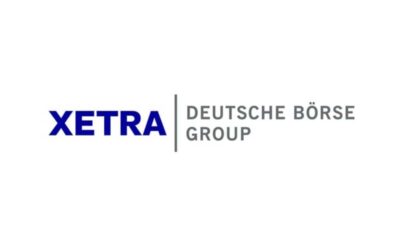
 Nyheter3 veckor sedan
Nyheter3 veckor sedanNya börshandlade produkter på Xetra
-

 Nyheter2 veckor sedan
Nyheter2 veckor sedan3EDS ETN ger tre gånger den negativa avkastningen på flyg- och försvarsindustrin
-

 Nyheter3 veckor sedan
Nyheter3 veckor sedanBig News for Nuclear Energy—What It Means for Investors
-

 Nyheter1 vecka sedan
Nyheter1 vecka sedanNordea Asset Management lanserar nya ETFer på Xetra
-

 Nyheter3 veckor sedan
Nyheter3 veckor sedanHANetfs VD Hector McNeil kommenterar FCAs kryptonyheter
-
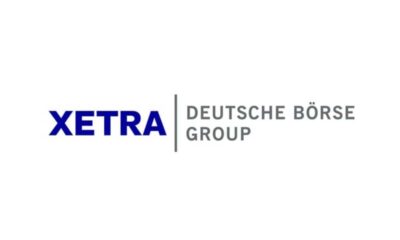
 Nyheter2 veckor sedan
Nyheter2 veckor sedanJPM noterar nya ETFer på Xetra och Börse Frankfurt



